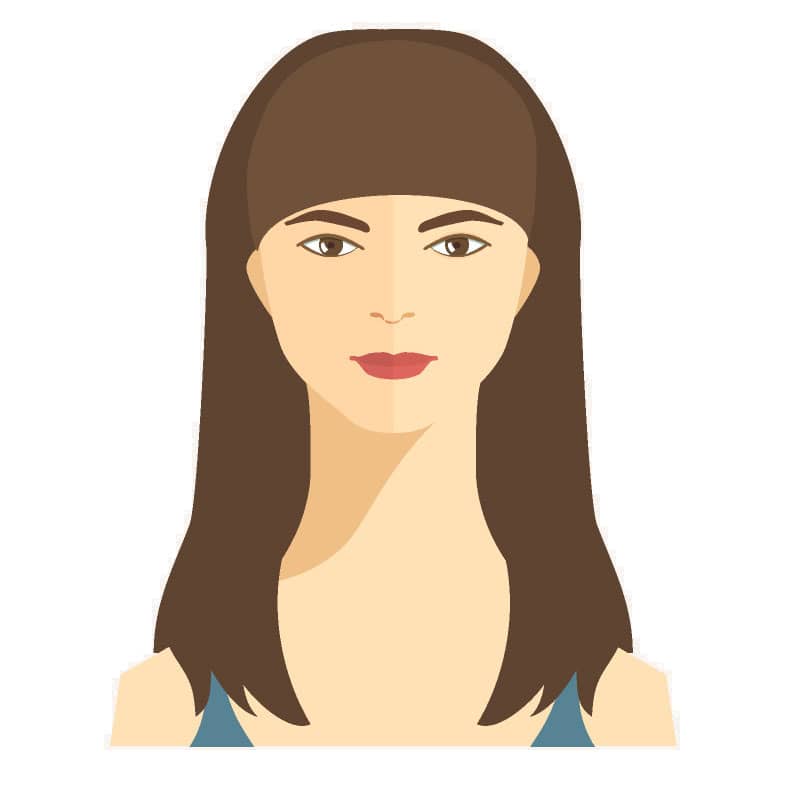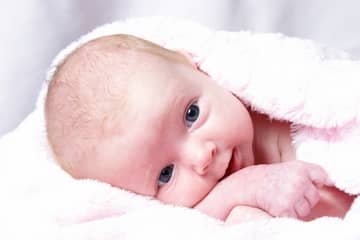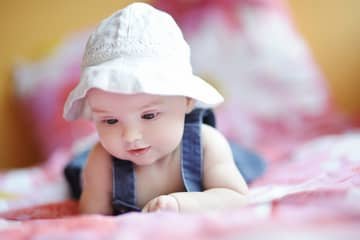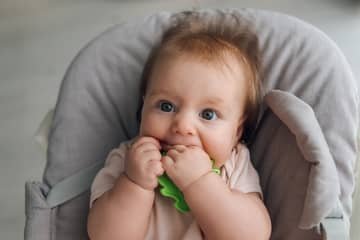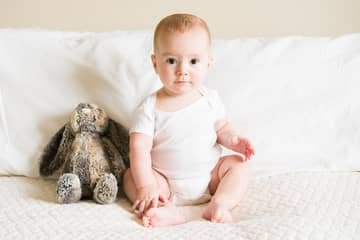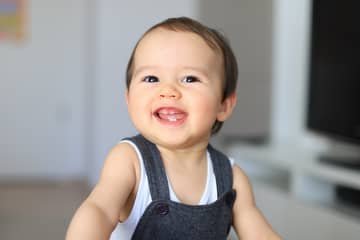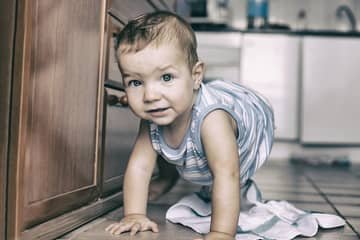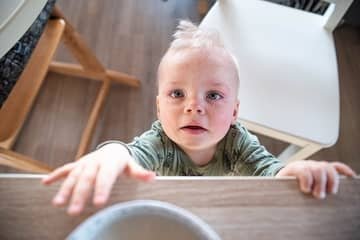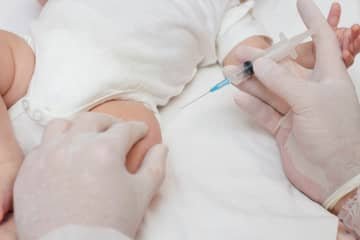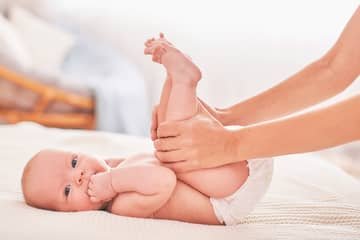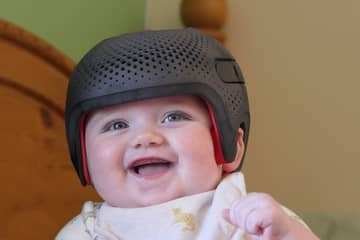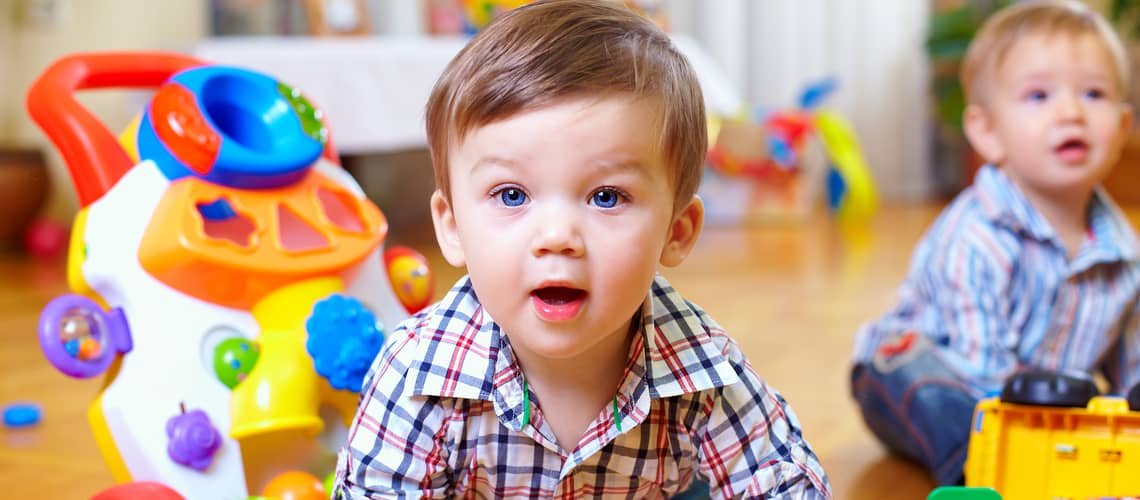
Child's psychomotor development month by month
Monitoring the progress of your children is natural for every parent. Both mothers and fathers are interested in what a child should know at a certain age, what progress he should achieve in the 1st, 2nd or 6th month of life. Of course, some developmental milestones should not be ignored, but the charts should not be strictly adhered to. Just as every pregnancy and birth is individual, so is the development of the child. While a child may lag behind in one stage of development at one age, he may progress in another. It is important to monitor the child's psychomotor development, but it should be remembered that these are only typical, not defining characteristics.
- Child development after months
- Psychomotor development of the child in the 1st month
- What can a 2-month-old baby do?
- Psychomotor development of the child in the 3rd month
- What can a 4-month-old baby do?
- Psychomotor development of the child in the 5th month
- What can a 6-month-old baby do?
- Psychomotor development of the child in the 7th month
- What can an 8-month-old baby do?
- Psychomotor development of the child in the 9th month
- What can a 10-month-old baby do?
- Psychomotor development of the child in the 11th month
- What can a 12-month-old baby do?
- Psychomotor development of the child in the 13th month
- What can a 14-month-old baby do?
- Psychomotor development of the child in the 15th month
- What can a 16-month-old child do?
- Psychomotor development of the child in the 17th month
- What can an 18-month-old child do?
- Child's psychomotor development - table
- Child's psychomotor development - experiences
- The most frequent questions - FAQ
- Comments
The child's development is most intense in the first year of life, then it slows down until puberty, when there is another significant leap in development. In the article, we summarized how a child's development looks from birth to 18 months.
Child development after months
When does a baby hold its head? When does the baby roll over? What can a one-month or 2-month-old baby do? There are more than enough questions about the baby's development, especially in the first months of his life. Mothers are worried about whether their children have delayed psychomotor development, whether it is normal if the child does not correspond to the charts, or if he makes more progress in one area than another. Psychomotor development is one of the most important processes in a person's life (gross and fine motor skills, cognitive, communication, mental and social skills are developed), so it must be given sufficient attention within certain limits.
At the same time, it must be remembered that every child develops at its own pace and the fact that he cannot yet roll onto his stomach at 5 months does not mean that he needs to be taught it by force. The period of psychomotor development of a baby takes place in leaps and bounds - sometimes it may seem to you that nothing is happening for a long time, but then the child learns several new skills at once. Sometimes it can appear that what has already been learned has been forgotten, but it can only be a phase when something new is being learned and over time one will return to what has already been learned.
If you have concerns about your baby's psychomotor development, contact your pediatrician. Regular preventive inspections are important, thanks to which any deviations or deficiencies can be detected in time.
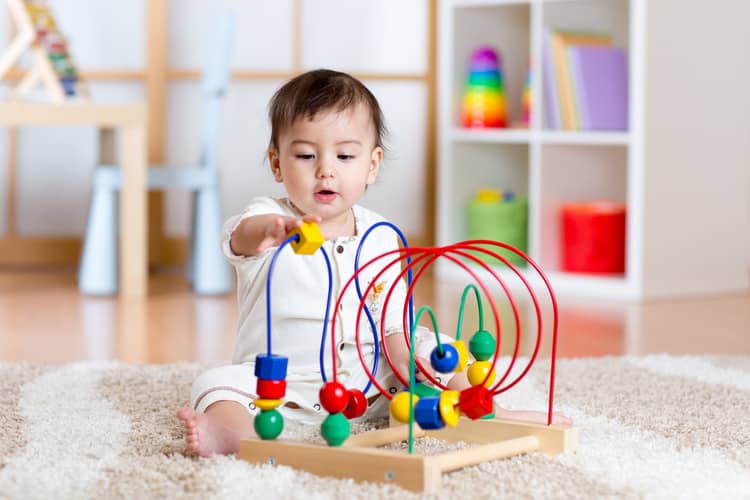
Psychomotor development of the child in the 1st month
Already after the first month, you can notice a significant shift in psychomotor development in a newborn. Although the baby is still lying down, it does not mean that it has not shifted. In the first weeks, he starts kicking his feet and moving his hands. His arms are usually bent and his hands clenched into fists, he should gradually be able to release his fingers and open his palm at least briefly. After you put a finger in his palm, the grasping reflex is manifested. Movements are still uncoordinated and uncontrolled.
The lying position is typical, while the child is able to raise the head slightly and react to stimuli - turning its head behind them. Lying on the stomach is uncomfortable for the child at this age, because not all the muscles have yet been developed, it is only suitable under supervision. When turning the head in this position, the back and neck muscles are strengthened.
The baby can perceive the mother's face and react to foreign faces, the movements of the corners of the mouth indicate a smile, blinking is frequent. Color vision is not yet fully developed, but the child can distinguish contrasting pastel colors.
Crying serves as a communication tool, children often cry profusely, expressing their demands - hunger, desire for sleep or contact with their mother. They make different sounds when they are satisfied.
What can a 2-month-old baby do?
A two-month-old baby develops fine and gross motor skills - he can control the movements of his legs and hands to a certain extent. The palms are either half-open or open and the fingers are more flexible, the child can hold an object in the hand for a short time. When lying on his stomach, he can raise his head and turn it in a specific direction, while this is an isolated movement. So the baby does not turn the chest and the whole body, but only the head. While lying on his back, he often observes his hands, often puts his fingers or whole fists in his mouth and licks them. He can already connect his hands, which means the interplay of both hemispheres of the brain. His abdominal muscles are getting stronger, he can lift his legs while lying on his back and keep them in the air for a while. Neck control also improves.
Notice the effort to reach for objects within his focal distance, although he cannot yet grasp them well. The child can still see at a relatively short distance, he still does not have fully developed color vision, but he can recognize the contours and shapes of objects.
Not only crying is used for communication, but also smiling and grimacing. The baby demands interaction (eye contact, touches, carrying in the arms), perceives sounds and melodies. He recognizes his parents' voices and looks for the originator of the sound with his eyes. Occasional babbling, winking and guttural sounds are typical. The intensity of the crying indicates various needs, including hunger, a full diaper or pain.
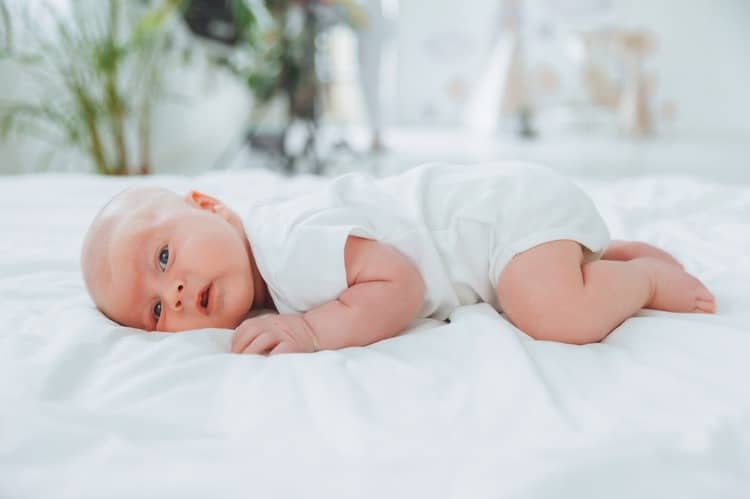
Psychomotor development of the child in the 3rd month
At this age, the typical bending of the limbs in the joints disappears, the arms and legs are stretched, and there is no noticeable bend in the elbow or knee. Movements are smoother and more targeted. At the end of the 3rd month, the child learns to control head movements, he can keep his head in the middle position most of the time while awake, he turns it to one side especially when he sleeps. In the prone position, he can raise his head 90° for more than 10 minutes and can turn it from side to side without problems in this position. His palms are open while lying down, he tries to reach for objects and grasp them. The child often explores his hands, raises them, examines them and puts them in his mouth (conscious movement). In a 3-month-old baby, drooling is typical, as the salivary glands are activated. Holding each other's hands is common, the child grasps the other with one hand. The grip is not yet fully developed, but if you give the little one a toy, he can hold it for a short time.
By the end of the 3rd month, the baby can control the muscles of the upper body and some babies can turn from lying on their back to their side. In the prone position, there is " grazing of horses (lambs, sheep)". The child begins to hold the body symmetrically, can support himself on his hands without using his elbows, straighten his spine and raise his head, turning it sideways and responding to stimuli (first upright). Stability in the area of the spine is not sufficient, therefore the baby cannot manage to sit alone.
What can a 4-month-old baby do?
Head movements are very good in a 4-month-old baby, he moves it in all directions to a greater extent. He can tilt his head in a lying position and look up with his eyes. The pectoral muscles are more developed, and the chest also rises when the bench moves up. Most children manage to move their head downwards when lying on their back, i.e. their chin points towards their chest and the child looks at its legs. The baby can roll over on its side without help and gradually even on its stomach without your help. If your baby isn't rolling over, don't panic, he still has time. Although the child is already holding his head and the back and neck muscles as well as the abdominal muscles are getting stronger, do not train him to sit yet. Because there is still a forward bend, which is harmful to the spine and lumbar part. The grip of the hand also strengthens and the effort to grasp objects is emphasized. It is noticeable even when lying on the stomach, the baby reaches for objects within its reach.
The baby no longer tests only hands with his mouth, but also toys and everything he can get his hands on. Eye and hand coordination is developed - the child can manipulate the objects he sees. It doesn't have to be perfect and squinting often appears. Fixation of objects by sight and eye coordination develop by 6 months. The child can distinguish faces and facial expressions, smiles more.
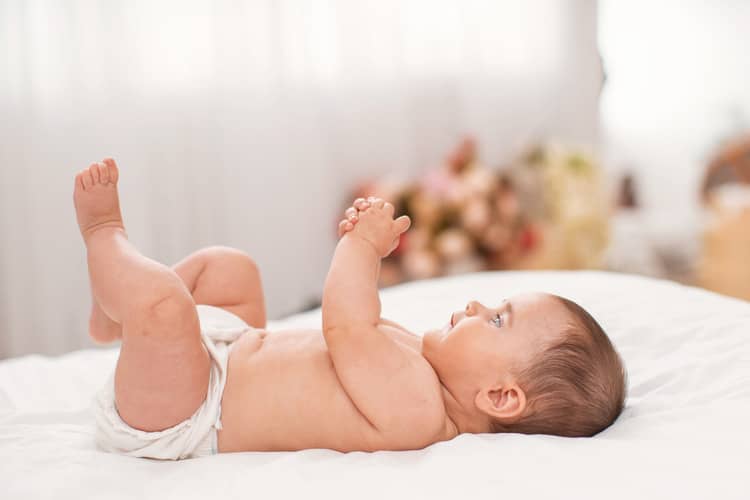
Psychomotor development of the child in the 5th month
Eye, hand and mouth coordination improves. The child can grab an object that interests him with both hands and put it in his mouth, while keeping his head and chest raised. Lying on his stomach, he can make an airplane, put both hands together at the same time, cross his legs and raise his head high, his back will arch. He can also pull one leg under his belly. From lying on his back, the child can actively turn to lying on his stomach, and here and there he manages to roll back. He no longer only grabs his hands, but also his feet and puts them in his mouth. Grasping hands is intentional, the child feels his fingers and intertwines them.
The grip is so strong that when a child grabs an adult, he can almost pull himself into a sitting position. It is still not recommended to leave him sitting for a long time so as not to strain his spine.
When talking to a child, he actively looks for the person who is talking to him. He can repeat syllables, so it is advisable to teach the little one the sounds of animals. He can laugh spontaneously and reacts enthusiastically to seeing himself in the mirror and to objects that make sounds.
What can a 6-month-old baby do?
A six-month-old baby can surprise you with his movements. It is no longer appropriate to leave him alone on the bed or changing table. Most children can roll over from their back to their stomach and vice versa. He can pull himself up to sit and stand. If you give the child your fingers, he bends over and automatically goes from lying down to standing on his feet. He has such a strong grip that he can stay on his feet for a while . Often at this age, a child can crawl with the help of their hands, but also sit up and can sit for a while without support. Can handle the so-called the second erecting, which engages the muscles along the spine in the thoracic region and the hip region, and pivoting (movement to the sides around the axis of the navel).
He can deliberately transfer objects from hand to hand, thanks to which he can turn and grasp them in different positions. He can move his eyes in one direction, so he can focus on everything that interests him. He touches the mirror if he sees his reflection in it, looks at pictures in books and profiles his taste. The child learns to understand words, imitates sounds, and loudly expresses joy by laughing.

Psychomotor development of the child in the 7th month
At this age, the child does not acquire the movement skills of individual parts of the body, but involves the whole body in movement, e.g. climbing or crawling. He stands on all fours, sways and tries to move forward. The position is already certain, but the child is not yet walking. He sits alone, so far only in a forward bend and leans on his hands. The baby can also grasp small objects, but he no longer uses all his fingers to grasp. He practices the so-called pincer grip – uses index finger and thumb. He can hold one object in each hand, while he can pick up an object in the other hand without letting go of the one he is already holding and perform movements with them. The movements become more precise and the child can hit another object. He practices the ability to let go of objects from his hand, and soon he is actively grasping them again.
The child pronounces two-voiced syllables (it is not yet a matter of conscious pronunciation of words, only repetition of syllables) and already understands several words. It reacts e.g. to nursery rhymes ("tap, tap..." and claps his hands) and games, develops passive vocabulary, improves understanding. He reacts to familiar people by smiling and stretching out his hands, to those he does not like, by grimacing and crying. Fear or shame in front of strangers may appear.
What can an 8-month-old baby do?
The development of the baby is progressing, in the 8th month its locomotor system is perfected and understanding improves. The child is very active at this age - he climbs, which exercises his whole body, his ability to sit improves and he begins to stand. He trains this ability, at first he does not know how to deal with it, but he quickly learns it and practices it. At first he stands still, then he begins to shift his weight from foot to foot. It combines standing with climbing on all fours and is very fast. It sits on its own without being held even on a flat floor.
Fine motor skills improve, the child recognizes the specific properties of individual objects. In another way, he plays with a cube, in another way with a ball, in another way with a bottle (he turns it so that it drips). The child duplicates syllables and often creates the first " words " - ham-ham, ma-ma, ta-ta, etc., while already associating them with the given thing - ham-ham associates food, ma-ma or ta-ta of the parent. They are still not active words. He tries to communicate by pointing, gestures and sounds.
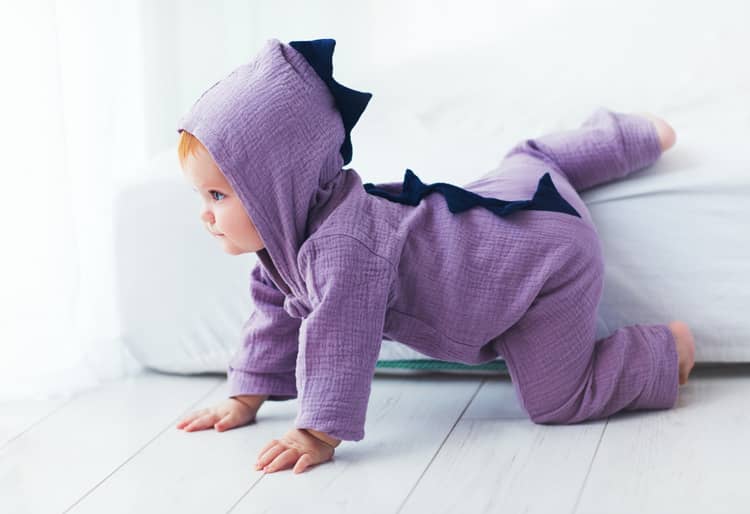
Psychomotor development of the child in the 9th month
At this age, the most prominent activity is movement. The child likes to be on all fours, swings, lies, sits independently. Lying on the back is no longer popular, the child likes to be placed on the stomach and turns often. An upright posture is a matter of course, the child clings to furniture or a playpen, tries to walk. He takes steps, that is, steps to the side. He learns to lift objects from the ground while holding on to furniture with one hand. He can squat and bend over and stand up again.
Grasping is problem-free in various positions - standing, sitting, on the back and on the stomach. The movement of the hands is targeted and the child can grasp the object with the tips of the fingers. A 9-month-old child learns through asymmetric movement, i.e. making different movements with his hands, e.g. hold an object in one and bang on it in the other. He already knows how to put objects in containers and holes, place them on the table. He cannot consciously let go of objects, rather it is a random movement. However, he likes to throw them and watch where they fly. He is aware of the shape of objects and that they look different from different angles.
The number of words and interjections increases, while the child associates them with the given thing. Rhymes and poems are popular, it is important to verbally motivate and praise the little one.
What can a 10-month-old baby do?
Climbing on all fours or crawling is a favorite activity of a 10-month-old baby. Scratching the couch, furniture and stairs is fun for him. He already has perfect control over sitting, so he is looking for other activities. Quadrupeds are a matter of course, walking is not yet completely common, there are still attempts to do so. The child walks around the furniture and still holds on to it. He stands on his feet actively, while he can reach the ground safely through his knees. He can grasp small objects with the end of his thumb and forefinger, he releases his grip consciously. He gains physical experience - he distinguishes between lighter and heavier objects, smaller and larger ones, that smaller ones can be inserted into larger ones, that objects fall to the ground.
The child talks to himself, while imitating adults with the melody of his speech, facial expressions and gestures. Says the first active words, such as mom or dad. He communicates using gestures and sounds, he learns what is right and what is wrong, what are the boundaries.
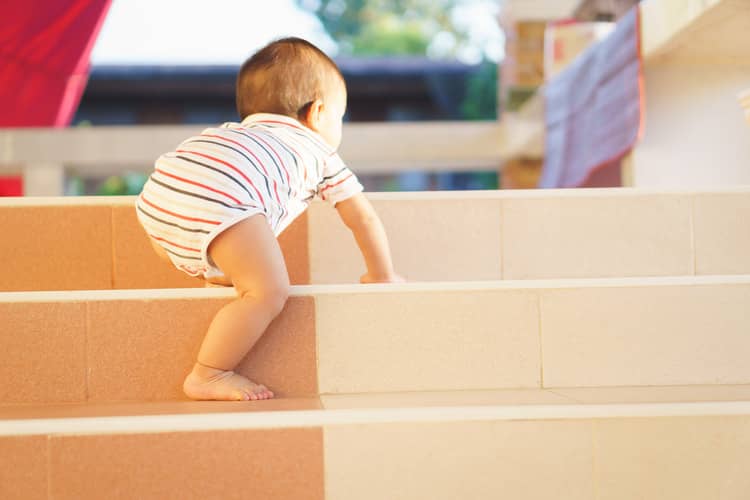
Psychomotor development of the child in the 11th month
The crawler slowly turns into a walker at 11 months, while he no longer takes steps only around furniture, but also into space. In the beginning, especially with the help of parents. In addition to walking, he also learns to fall "safely". The child can stand up by himself and can stand for a long time. It is often held with one hand and with the other e.g. he plays. He gradually gains stability and gains the courage to take steps without help. Usually at this age, steps to the sides and moving after objects occur, but some children can take a few steps even without help, it is individual. The child likes to imitate his surroundings, cleans like mom, crafts like her. He already holds the spoon naturally and is able to feed himself with increasing success.
Children like to explore and create, their imagination develops. They already know their body and can point to individual parts (eye, nose, ear, mouth, etc.). They also already point at things with their fingers and know that if they point to an object and their parents give it to them, they will achieve their goal, it is a way of communication. By imitating and repeating, their motor skills, visual coordination, grip, hearing and speech improve. Your little one is becoming more and more aware of his own self, so it is still necessary to teach him what is allowed and what is not. He doesn't understand the word, but he often tries to see where he can go.
In the 11th month, the child knows how to cooperate (when eating or dressing) and absorbs all information. He is actively expanding his vocabulary, so it is advisable that you explain to him what and why you are doing, name things. He still continues to utter the first words, usually associated with persons and things close to him.
What can a 12-month-old baby do?
During the first year of development, a significant shift occurred in the baby's psychomotor skills. Fine (hand movements and grasping) and gross motor skills (laying down, sitting, walking), speech development and social skills improved. The child can stand and can stand on tiptoes or one leg while holding on to furniture. He can take independent steps, carefully sit down from a stand and stand up again. Some children can climb low obstacles or even walk up stairs with help.
The grip is firm, the child can hang freely on your hands or on the crossbar. Developed hand movements testify to the child's developing intellect and growing experience. Movements are precise and targeted, performing a different movement with each hand improves.
Many children chatter happily at 12 months, others think about words before they say them. It is usual to use 5-20 active words, but it is very individual. It should be remembered that understanding develops first, followed by vocabulary. A one-year-old child can play by himself for a short time, can respond to the parent's calls and distinguish simple commands. His behavior is still egocentric and focused on his needs. The child should still be praised for every progress.
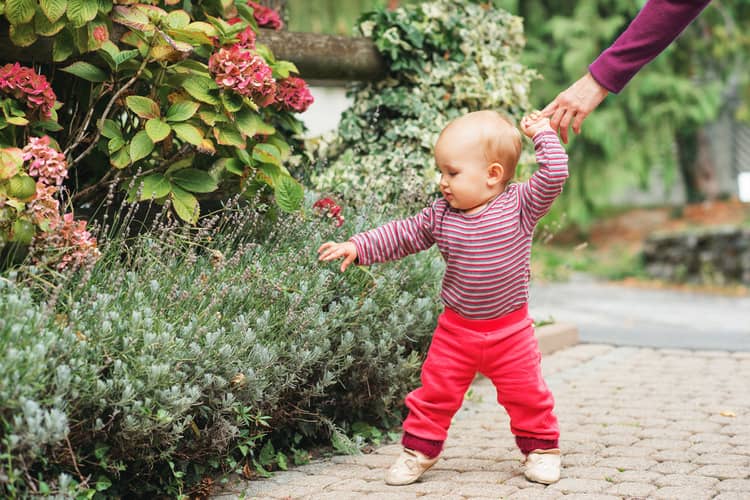
Psychomotor development of the child in the 13th month
At the age of 13 months, the child becomes more independent, he can distinguish himself from his mother, he focuses on the external environment, but also his feelings. She is mostly positive and enjoys exploring, but sometimes separation anxiety and fear of being separated from her mother can manifest. While exploring the surroundings, the toddler makes sure that the parent is within reach. The farewell should therefore be short, it is not appropriate to pull the child away from the activity.
The little one starts walking actively and trains his balance. Falls are a matter of course, but the child must be encouraged to stand up and walk again. You can develop fine motor skills at this age by drawing. The improvement of hand and finger movements is noticeable, the movement of dropping the object is smoother.
The vocabulary expands rapidly at this age, the child understands what you say and communicates with his own language, gestures and learned words. Unfortunately, despite developing communication skills, the little one can't always express what he wants, that's why his emotions can change. A smiling happy child suddenly becomes furious. At this stage, you need to help the child understand his emotions and teach him to manage them.
What can a 14-month-old baby do?
The period of independence and individualization of the child continues, therefore manifestations of separation anxiety (screaming and crying, tightening, refusal of food, games) may still occur. The child tests the boundaries - his own and his parents'. He begins to assert his will very strongly, and the beginnings of jealousy often appear. The little one wants his mother only for himself and does not want to share her.
The child can move independently, his movements become more precise, he can control every movement as he wishes. This means that it can fill and empty boxes and containers of things. It is important to allow the child independence in choosing what he wants.
At 14 months, a child can understand many more words than he can say, but he learns new words every day. He often repeats one word over and over to learn it, he asks you to repeat one poem or song to him over and over again. He slowly begins to realize and build relationships with other children. He still sees them as "things" not as friends, so they will play separately, not together. The child tries and learns, explores the boundaries. Therefore, the word should not be taken seriously and should be valid in all circumstances (no, you cannot climb on the table, etc.).
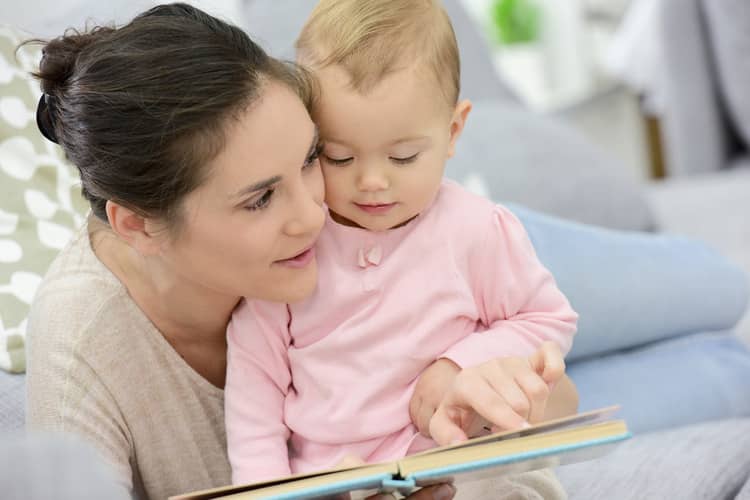
Psychomotor development of the child in the 15th month
At this age, the child is already fully aware of himself and his favorite word becomes no. He tries to cross the established boundaries and often "fights" with his parents even in small matters (I don't sit down, I don't go to sleep, etc.). A toddler openly expresses his positive and negative emotions. He wants to constantly discover, he wants to move, to find out how things work. Parents are the most important people for a child and he remembers everything they say.
In the framework of gross motor skills, the child is independent - he walks, runs, jumps, in the framework of fine motor skills, his grip is still improving (eating with a spoon is more coordinated, independent drinking from a cup). He can build, leaf through a book, points so that you describe and explain things to him.
At 15 months, the child's tongue is usually untied. He can say more words, he responds to verbal instructions, if you don't understand him, he tries to communicate using gestures. He often uses non-verbal communication (nodding his head as yes, shrugging his shoulders as no).
What can a 16-month-old child do?
This is a critical age regarding the control of emotions. The child experiences and expresses new emotions, but is often unable to control them. He considers himself to be the center of the universe, so often trying to prevent the child from doing something (to touch something, take it in his hand, etc.) results in several minutes of crying. If he doesn't get what he wants, he can get angry, because he can't respect agreements/boundaries yet. He often repeats his favorite poems and wants you to read to him or flip through a book with him and describe to him what you see.
A 16-month-old child can already name individual parts of the body and objects in his favorite books. The child's spatial vision is still not fully developed, basically he only sees what he has in the direction he is looking. It moves independently, but the steps can still be high and a bit unsteady. He can handle a spoon enough that most of the food ends up in his mouth, he can more or less use a glass without it spilling and he can put it on the table. He is more skilled in dressing and undressing.
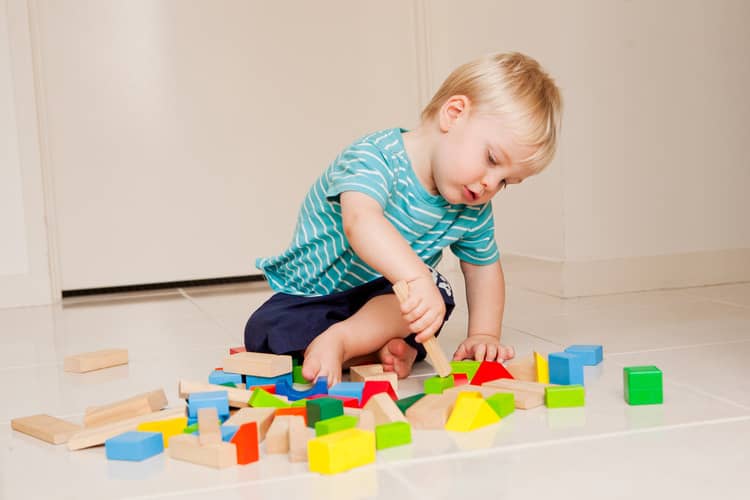
Psychomotor development of the child in the 17th month
Walking, running, climbing on a chair or couch, lifting objects - a 17-month-old child is still perfecting these skills. He is always on the move, overcoming obstacles is a challenge for him. Stairs, on which he can walk up and down for a very long time, are popular. Laterality is still not clear, i.e. whether the child will be right-handed or left-handed. He can still hold a spoon or a pencil once in his right hand and once in his left hand.
Connecting 2 words should be a matter of course (daddy come, mommy here, etc.), but often the regularity of using certain words is already established. The child should be able to respond to the parents' simple requests and "conduct a dialogue" (understands the reciprocity of the conversation).
What can an 18-month-old child do?
Physical dexterity continues to increase, a toddler can handle a cup without spilling. He can pick up small objects, place them in larger ones, and then take them from there. It is still very unlikely that a child would actively form relationships with other children, he will play with them only if an adult is the intermediary during the game. The vocabulary is increasing, the child can actively use 15 or more words. He even combines them into simple phrases. Understands and can follow simple instructions.
Possessive behavior is typical, the child at this age does not like to share and often uses the word "mine". His attention is developing, but it is still scattered and the child does not last long during activities. He openly expresses his affection, but also his anger, often imitating the behavior of the people around him. At this age, the so-called crossing the center line. The child is able to visualize the offered object, although he already holds something else in his hands. If he has a toy in only one hand, he folds it over and takes the offered one in the other hand, if he has something in both hands, he puts down one object and grabs the offered one.
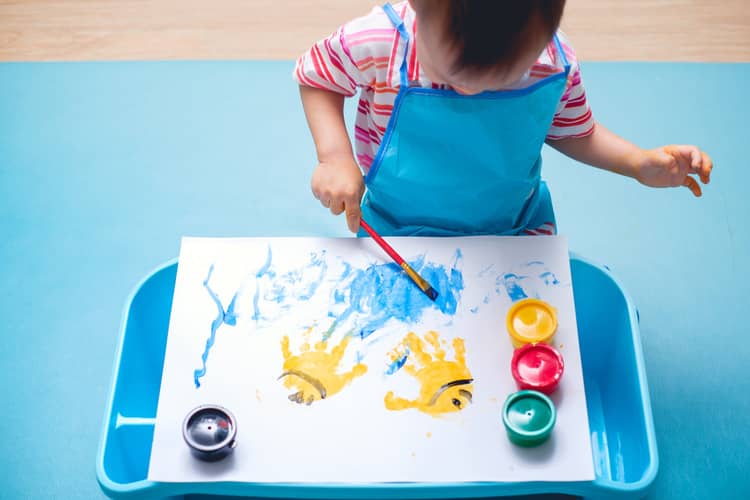
Child's psychomotor development - table
For a better overview, we have prepared a table for you, in which you can find the individual stages of the baby's development. Some changes in psychomotor development are more prominent than others in the first weeks and months. Every child is individual, therefore a specific characteristic sign of development may not occur in every little one in a given month. Some advances are intertwined and the parent may not even notice them, some may come at the same time and calmly even later than the prescribed age. At any age, it is important to praise the child for progress, because in the first months or years, his personality is formed and his self-confidence is built.
Child's psychomotor development - experiences
Mothers are often concerned about delayed psychomotor development in their child and often wonder if their child is developing normally. Most of them agree that each child has his own pace and does not need to be pigeonholed. Sometimes progress comes overnight, and a child who was not reaching for a toy suddenly starts grabbing everything in his vicinity. Of course, if you have concerns, you should consult a doctor to see if the development is progressing as it should. If so, you can stimulate the child, but never force him to do things. Some mothers recommend Vojta method.
The most frequent questions - FAQ
A child's psychomotor development cannot be pigeonholed. Yes, the table is very helpful, but it may not always be authoritative. Some children are lazier, some are behind in one task and ahead in another, their physical and mental readiness simply differs. In the article, we told you how a child should develop month by month, but as long as your little one does not fall behind dramatically and discovers the world in his own way, nothing happens if he does not meet the general recommendations. We will be happy if you share the development of your little ones and experiences with the individual stages of development in the comments.
When does the baby roll over?
When does the child start to sit alone?
How can I find out if the child is behind in development?
When does the first uprighting occur and when does the second uprighting occur?
Pridať komentár
